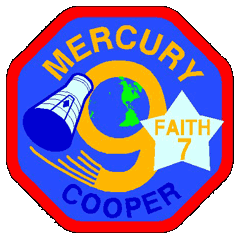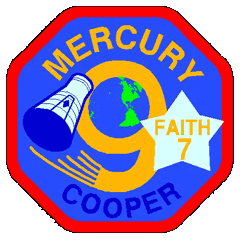CANCEL

Mercury-Atlas 9 (Faith 7)
Launch Date
May 15, 1963
Craft
Mercury
Status
Past
Crew
1

Mercury-Atlas 9 (Faith 7)
Launch Date
May 15, 1963
Craft
Mercury
Status
Past
Crew
1
Overview
This final flight of the Mercury program remained in orbit for a day and a half. While Soviet human flights had already lasted multiple days, NASA had no data on the effect that had on the human body. To answer that question and bring Mercury to up to the same level as the Soviet Vostok program, Faith 7 was a 34-hour mission. Gordon Cooper tested a person's ability to track a blinking object in orbit, measured atmospheric drag on the spacecraft, and sent back the first American television images from space, although they were never broadcast live at the time.
Crafts

Mercury
The Mercury capsule was the United States' first human spacecraft. Built without onboard computers, all flight calculations had to be determined on the ground and radioed up to each crew member. The spacecraft performed two suborbital and four orbital human missions and proved that people could live in space for multiple days.




